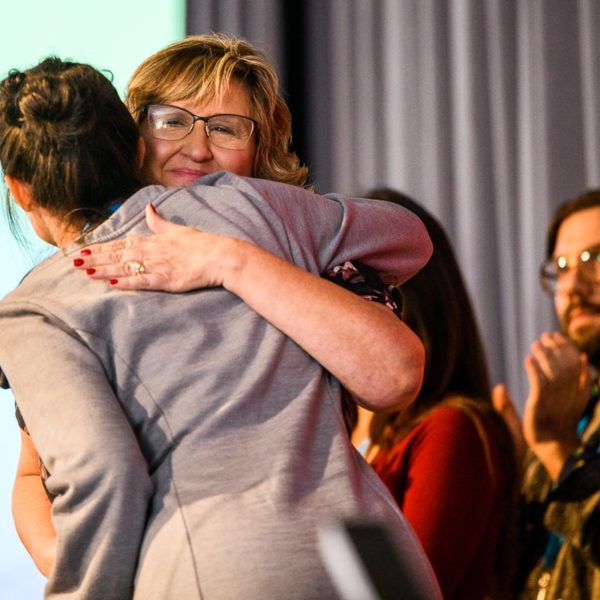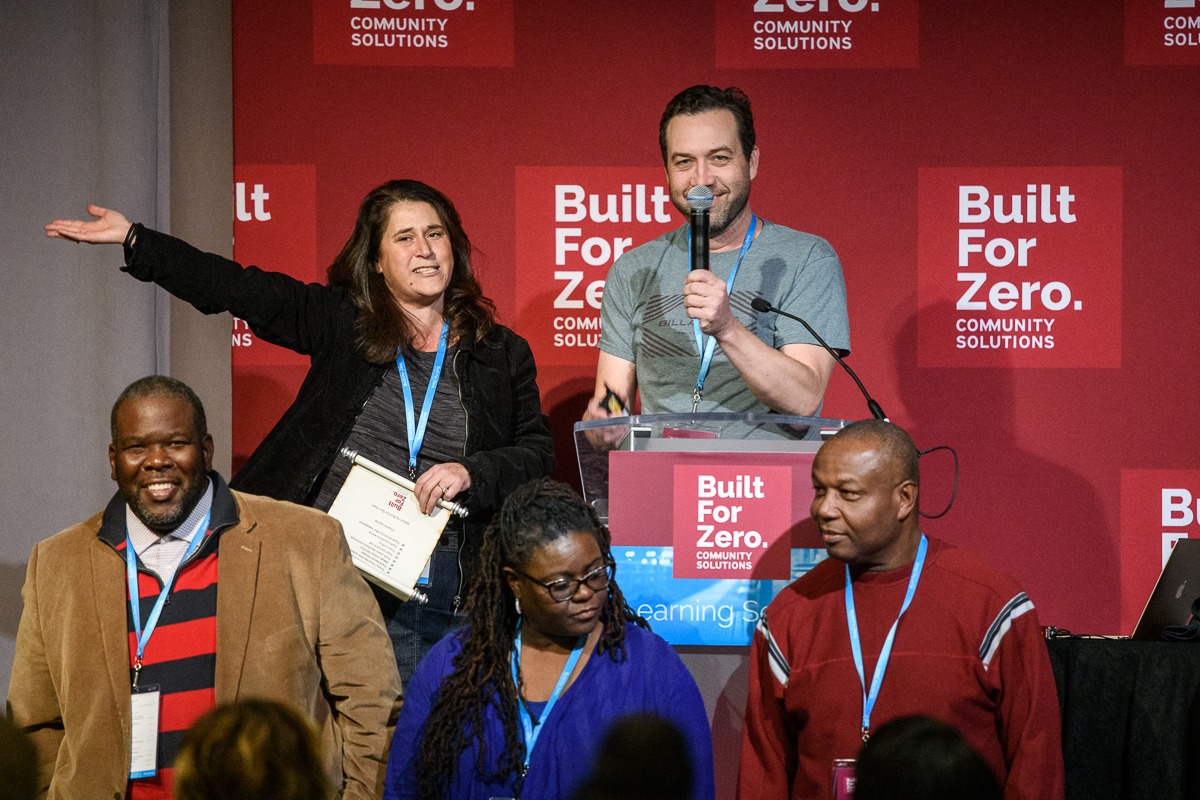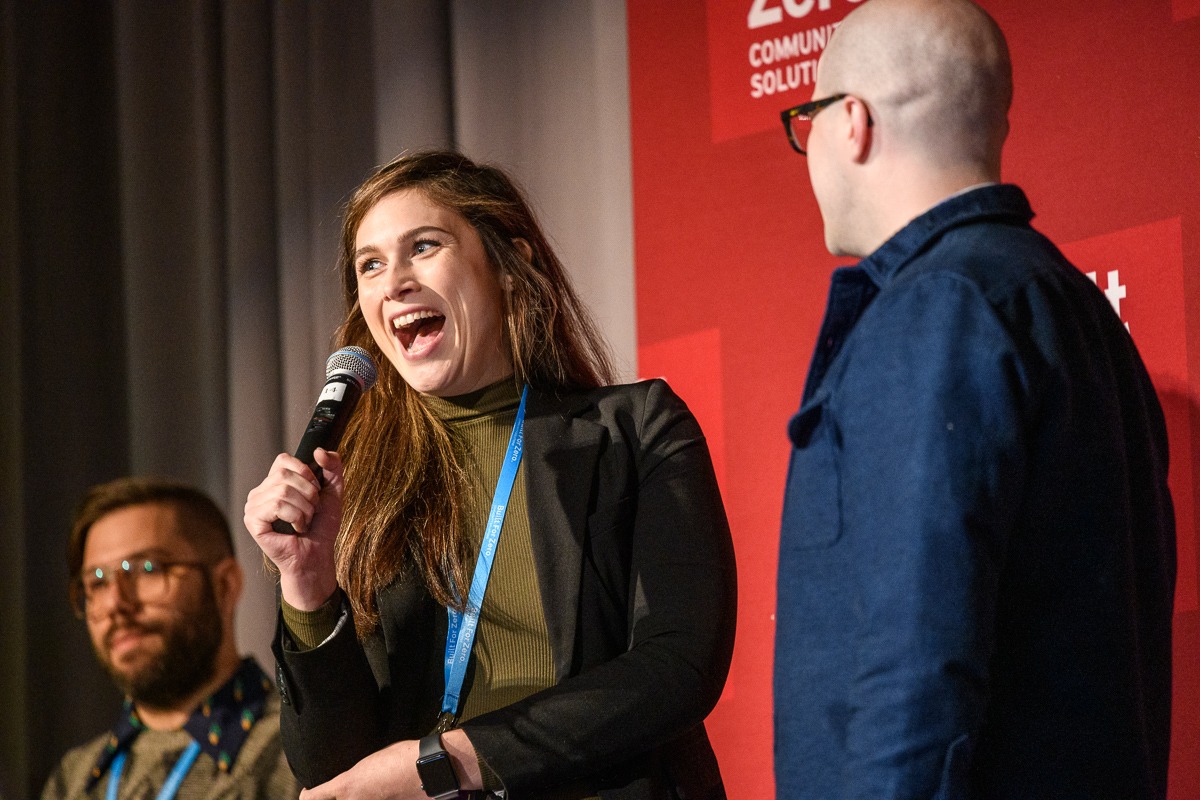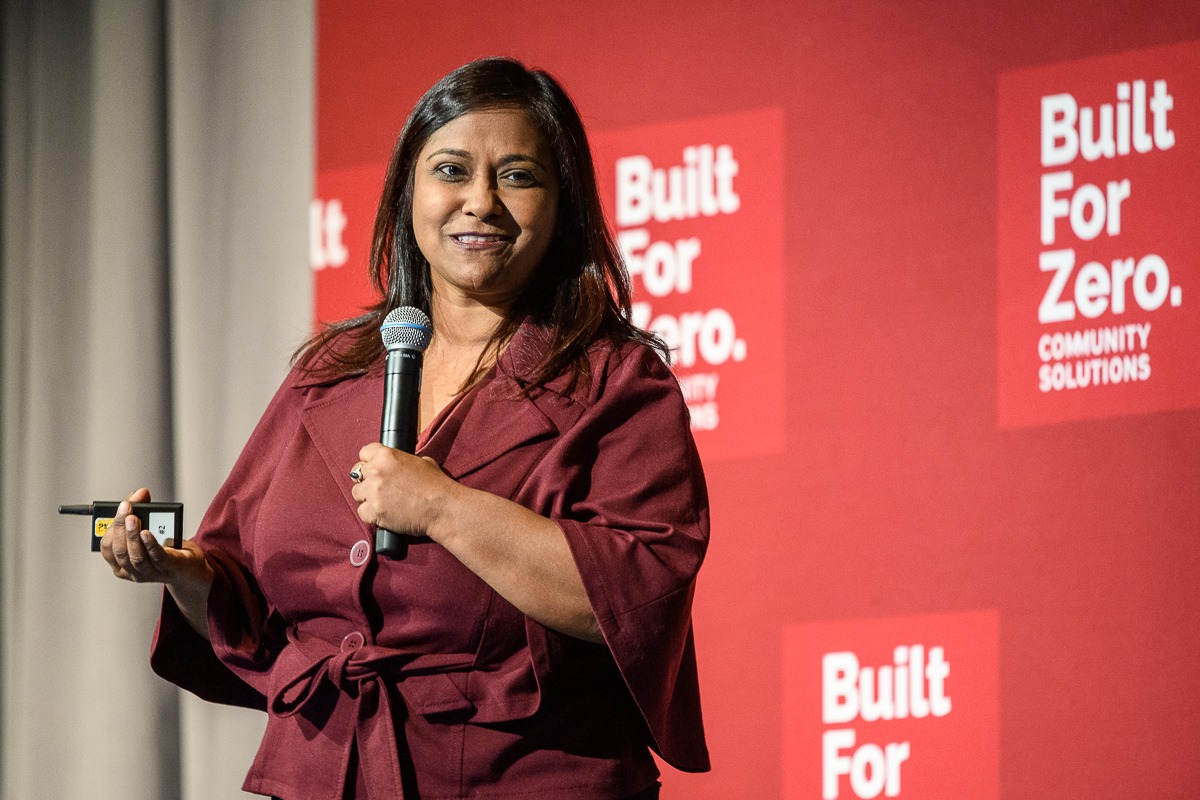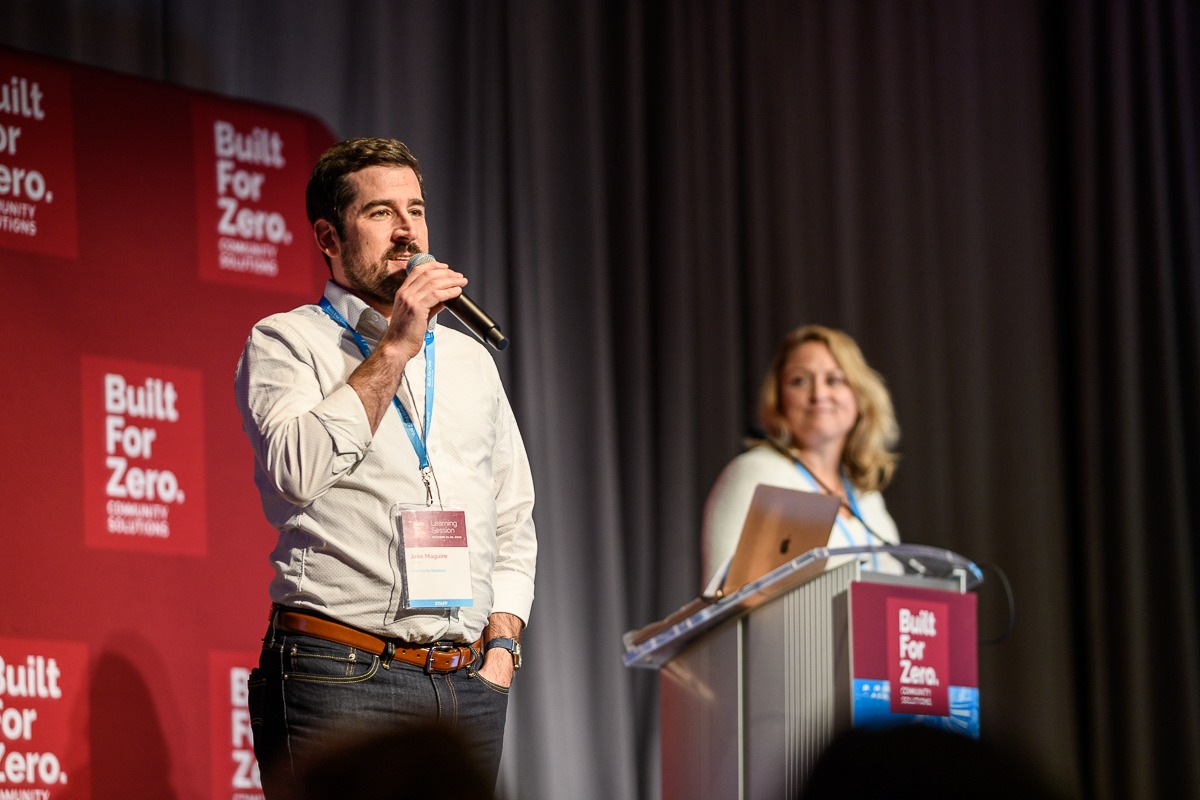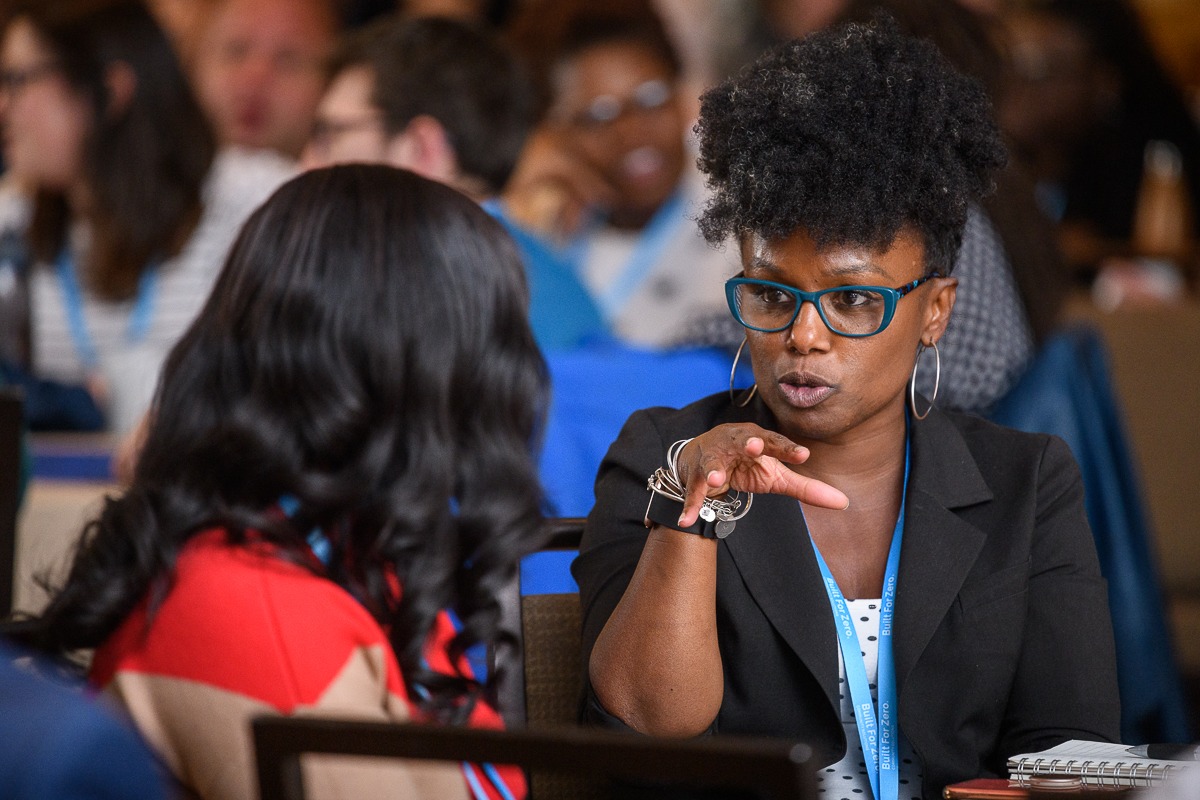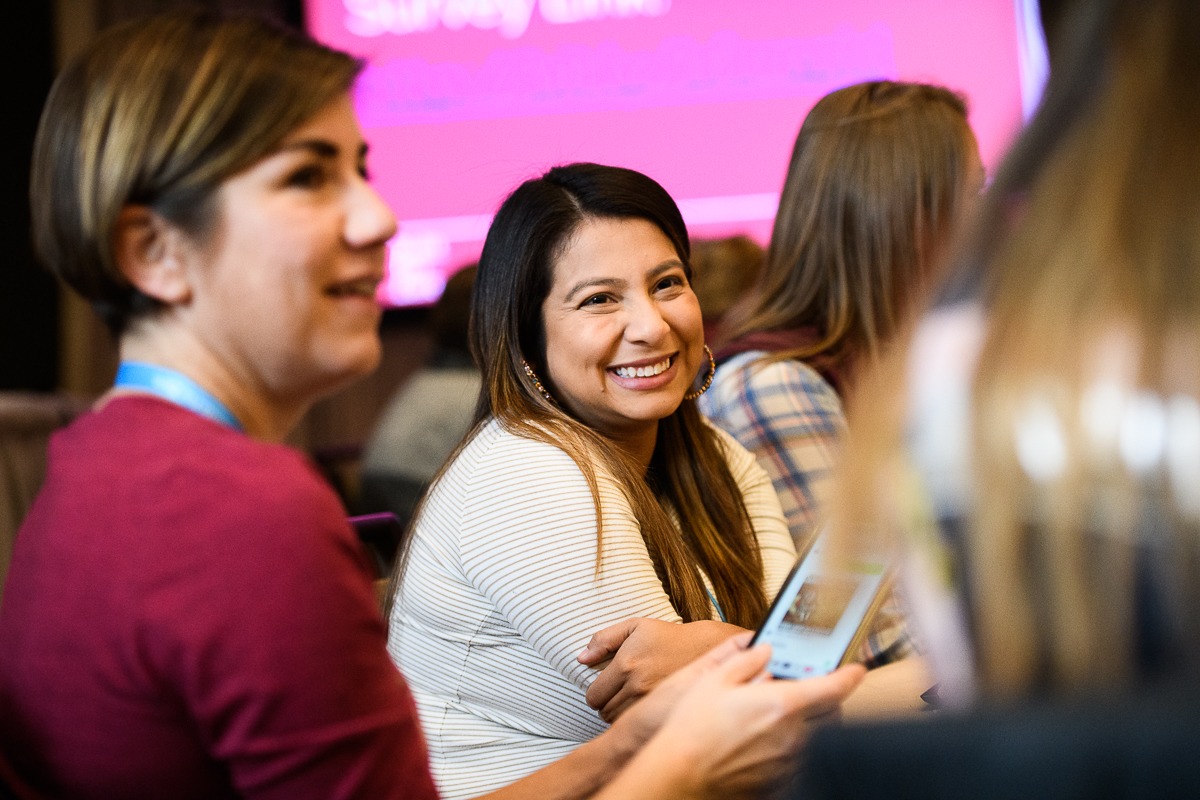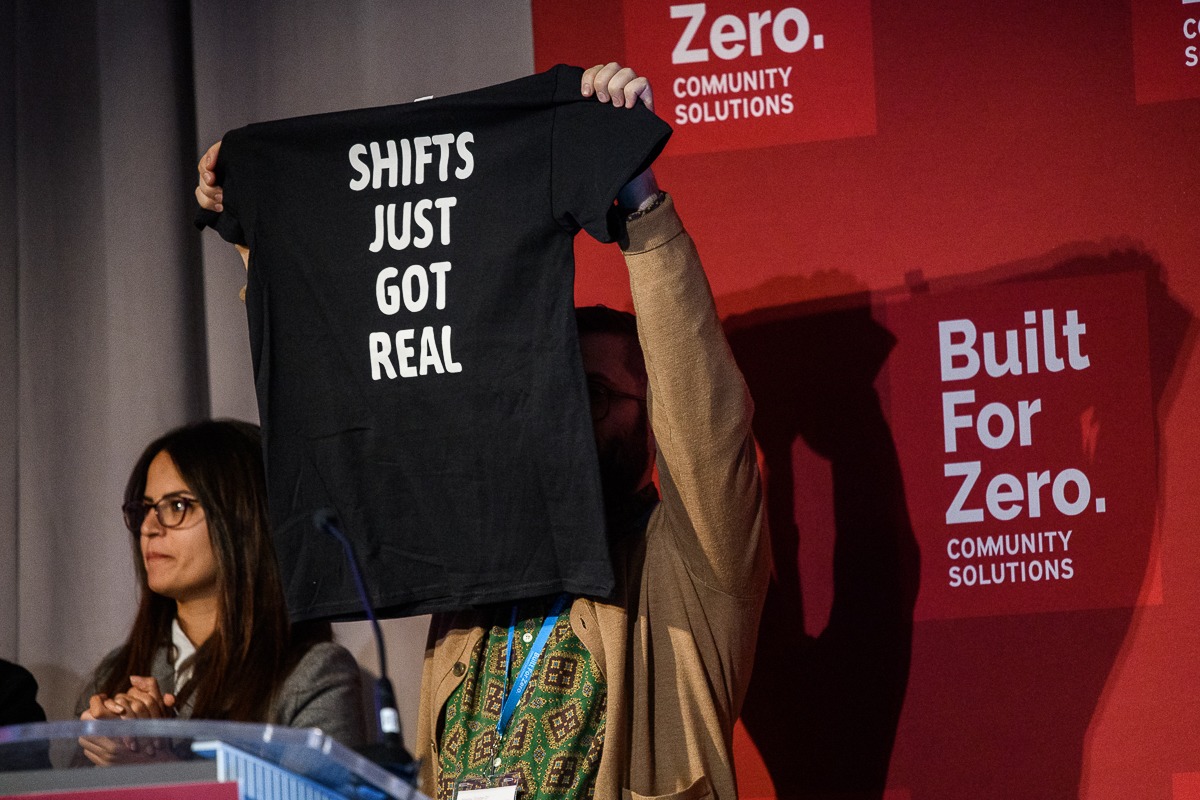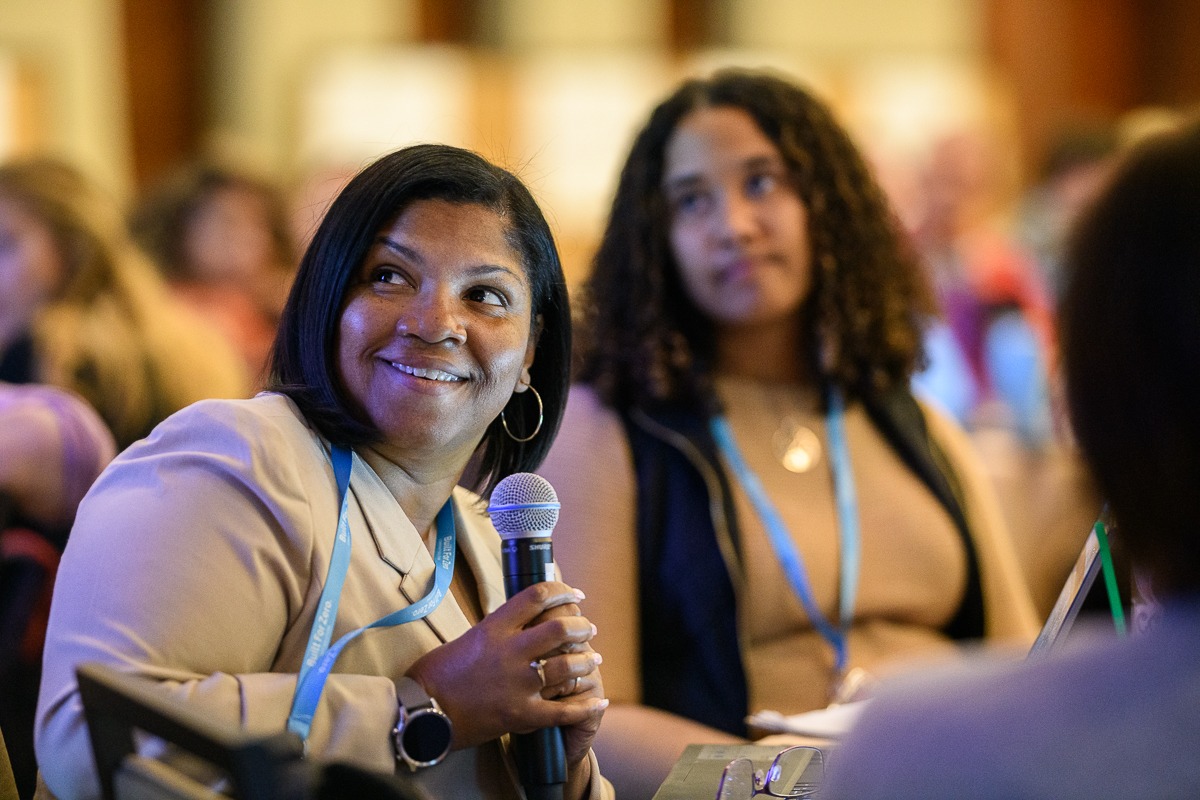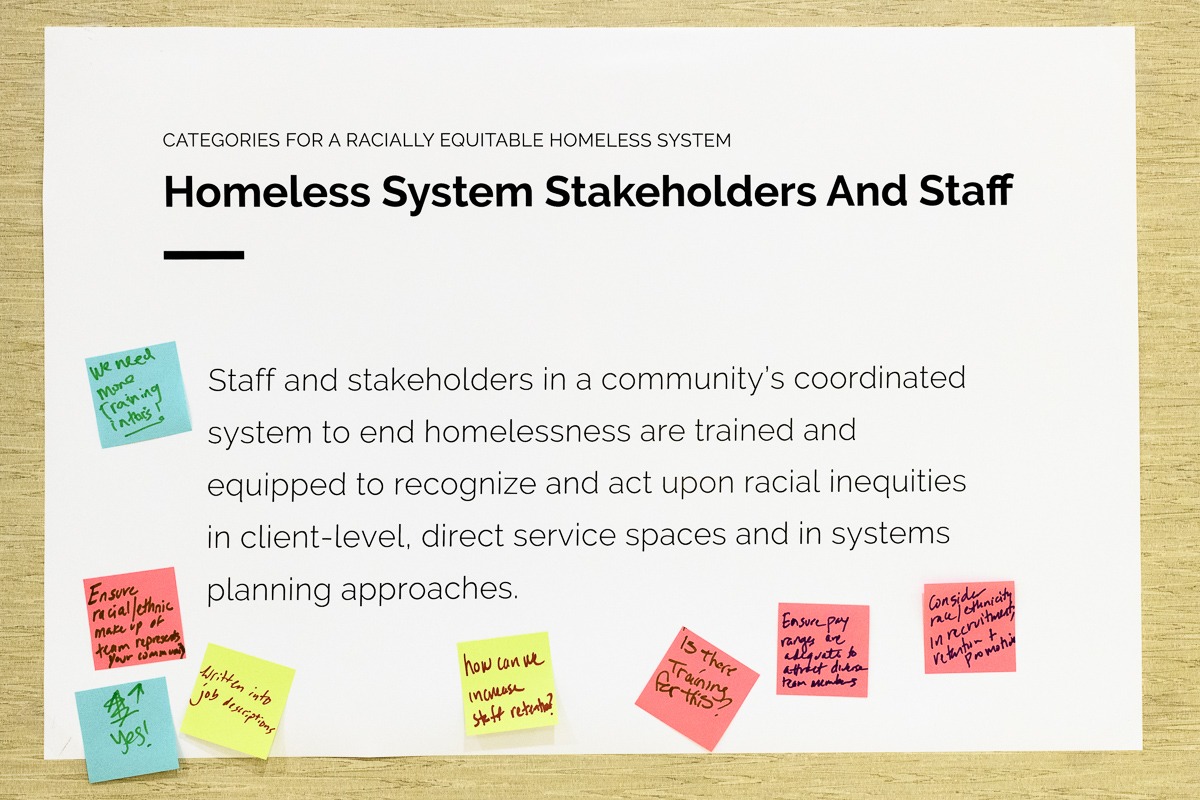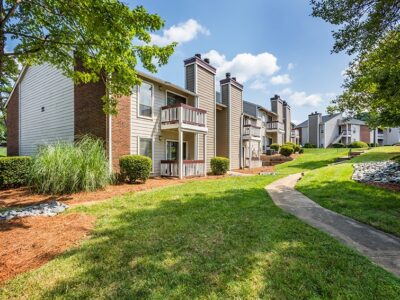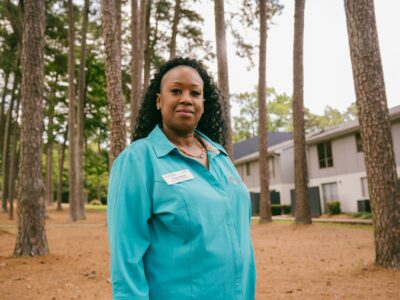Four leaders stepped onto the stage at the Built for Zero Learning Session, each of whom represented a community on the cusp of ending homelessness for a population. When communities have been certified for reaching that milestone, known as functional zero, Community Solutions provides them a plaque created by Piece by Piece, a company in Los Angeles that employs formerly homeless individuals.
“A system can be running well, but it’s not optimal if you’re not doing any innovation.”
Emma Beers, Coordinated entry specialist
“We’re so confident this group will get there that we’ve already put in orders for those plaques,” said Nate French, the Portfolio Lead for the Built for Zero Collaborative.
Emma Beers, a Coordinated Entry Specialist for the Chattanooga Regional Homeless Coalition, was one of the representatives on that stage. She was asked to reflect on what has driven their progress to date. “A system can be running well,” she responded, “but it’s not optimal if you’re not doing any innovation.”
The audience included more than 550 people, including representatives from 75 communities, the largest Built for Zero incoming class to date, and dozens of strategic and federal partners. They gathered to explore new ideas and innovations to accelerate an end to homelessness in their communities.
Case Conferencing
Communities in Built for Zero use real-time, person-specific data — also known as a By-Name List — to drive their work to end homelessness in their community. Case conferencing meetings serve as one of the primary vehicles used to translate those lists into real change for individuals experiencing homelessness and the homeless response system itself. Case conferencing meetings gather a community’s housing and service providers to solve problems so that individuals on the By-Name List can move into permanent housing faster. The meeting also drives system improvement efforts as teams learn from each client they house.
“For many communities, [case conferencing] has been the change that has broken stalemates in progress and helped communities end veteran or chronic homelessness.”
EDDIE TURNER, Strategy Lead
“Across Built for Zero, case conferencing has driven tremendous progress for communities in 2019” said Eddie Turner, Strategy Lead for the Built for Zero Collaborative. “For many communities, it has been the change that has broken stalemates in progress and helped communities end veteran or chronic homelessness.”
In order to accelerate these changes across the nation, Built for Zero used the Learning Session to lift up best practices, co-design new changes with teams, and circulate a package—the Case Conferencing Action Pack—that contains over 100 change ideas to help communities build a practice that houses clients faster and fosters new learning for system improvement.
Many teams committed to remodel their case conferencing meetings right away. The most popular change was a new method to track a client’s journey through the housing system, clarify next steps, and predict a move-in date into permanent housing. This simple change is expected to accelerate housing placements within a month. Other teams decided to adopt success measures for their case conferencing practice, believing that if the meeting is worth holding, it is worth measuring its results.
Just a week after the learning session, Heather Kimmel, Assistant Executive Director of the Housing Authority of the Kern County, wrote to share that the team had already housed one client — and two more clients were scheduled to be housed the following day.
“We expect to see results on a larger scale in the months to come, and that these optimized case conferencing practices will spur a new wave of accelerated housing placements and system-level improvements,” said Garen Nigon, Built for Zero Strategy Lead.
Kaiser Permanente
Homelessness is an experience that cannot be isolated from other critical parts of a person’s life — particularly when it comes to someone’s health and well-being. The movement to end homelessness is reflecting this deep connectedness thanks to the support of Kaiser Permanente, which announced its partnership with Community Solutions in March to accelerate the end of homelessness in communities across the country.
At the Learning Session, the communities in Kaiser Permanente’s footprint gathered for the first time with local Kaiser Permanente staff to discuss how they could work together to end homelessness. This included 15 communities, including five new communities from Colorado and four in Oregon. “Kaiser Permanente is committed to clearing the path to make it easier for communities to end homelessness,” said John Vu, Vice President of Strategy for Kaiser Permanente.
Other Highlights
- The Urban Institute introduced the framework behind a forthcoming tool that will help communities quantify the costs and benefits of reaching functional zero.
- Somava Saha from the Institute for Healthcare Improvement delivered the opening keynote, encouraging attendees to consider how they have experienced change as part of Built for Zero and where they anticipate needing to grow as a leader. “If we are the ones who are the privileged inheritors of this system, it’s our obligation to change,” she said.
THANKS TO OUR PARTNERS
A huge thank you to the continued support and investment of all of the partners that were able to join us in Denver. In particular, we’d like to highlight those below who played a critical role in ensuring the success of the Learning Session:
- Federal Partners: U.S. Department of Housing and Urban Development, U.S. Department of Veterans Affairs, and U.S. Interagency Council on Homelessness
- Built for Zero Partners: A Way Home America, Center for Social Innovation, Institute for Healthcare Improvement, Built for Zero Canada, A Way Home Washington, The Urban Institute:
- Core Sponsors: Quicken Loans, Home Depot Foundation, Ballmer Group, Tableau Foundation, Kaiser Permanente
- Event Sponsors: Amazon Web Services, Wellcare
